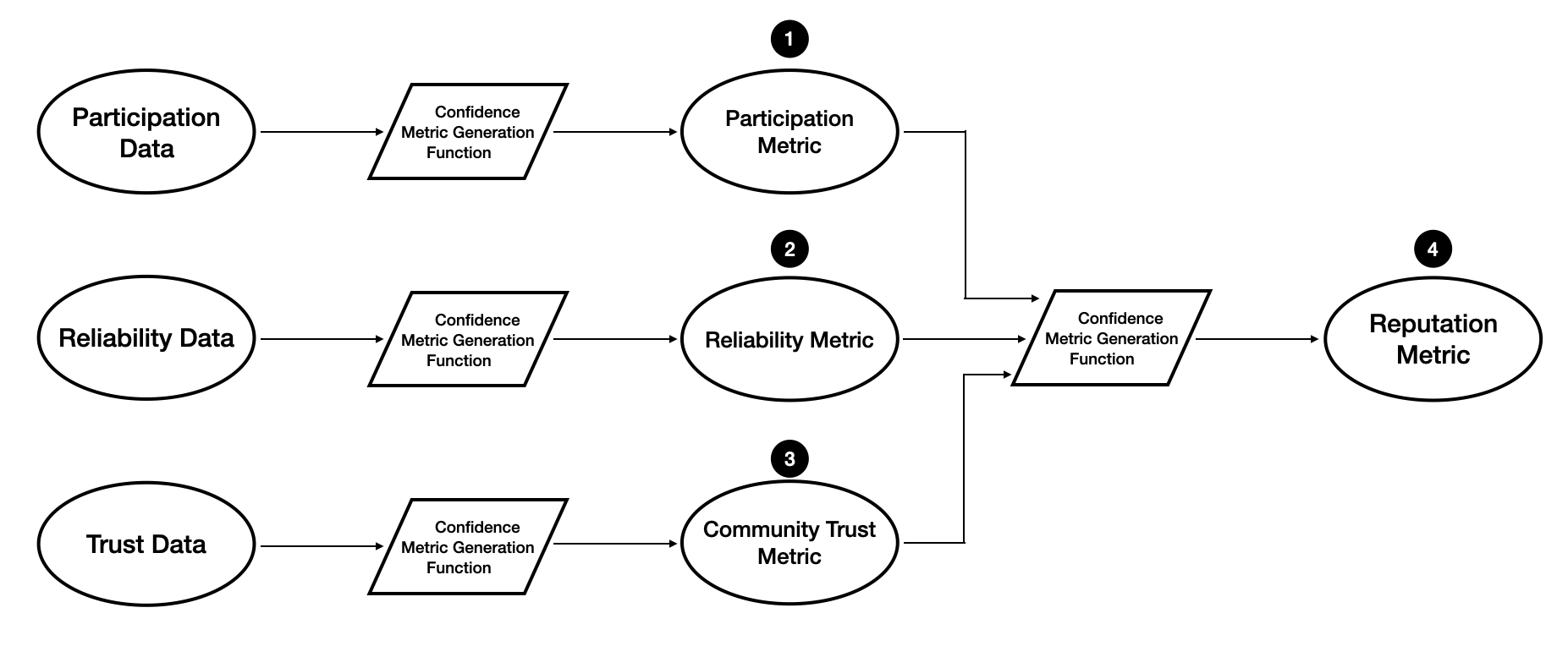Generating Reputational Metrics
The function that establishes reputational metrics must remain obscure to deter manipulation. However, certain contributions will be advertized as impactful in order to demonstrate that the process is fair and secure. By revealing these we provide insight into how the system works broadly without revealing its internal workings and the DAO is able to align community resources with members and their proposals that demonstrate the highest scores. Below is a diagram that outlines some possible data inputs.
The 4 Reputational Output metrics are:
Participation: The amount the user takes part in governance/token value generation.
Reliability: The quality of the input the user has offered and the consistency with which they are presented.
Community Trust: The user’s involvement in malpractice and the prevention of such.
Overall Reputation: A weighted combination of the three previous elements.

Last updated